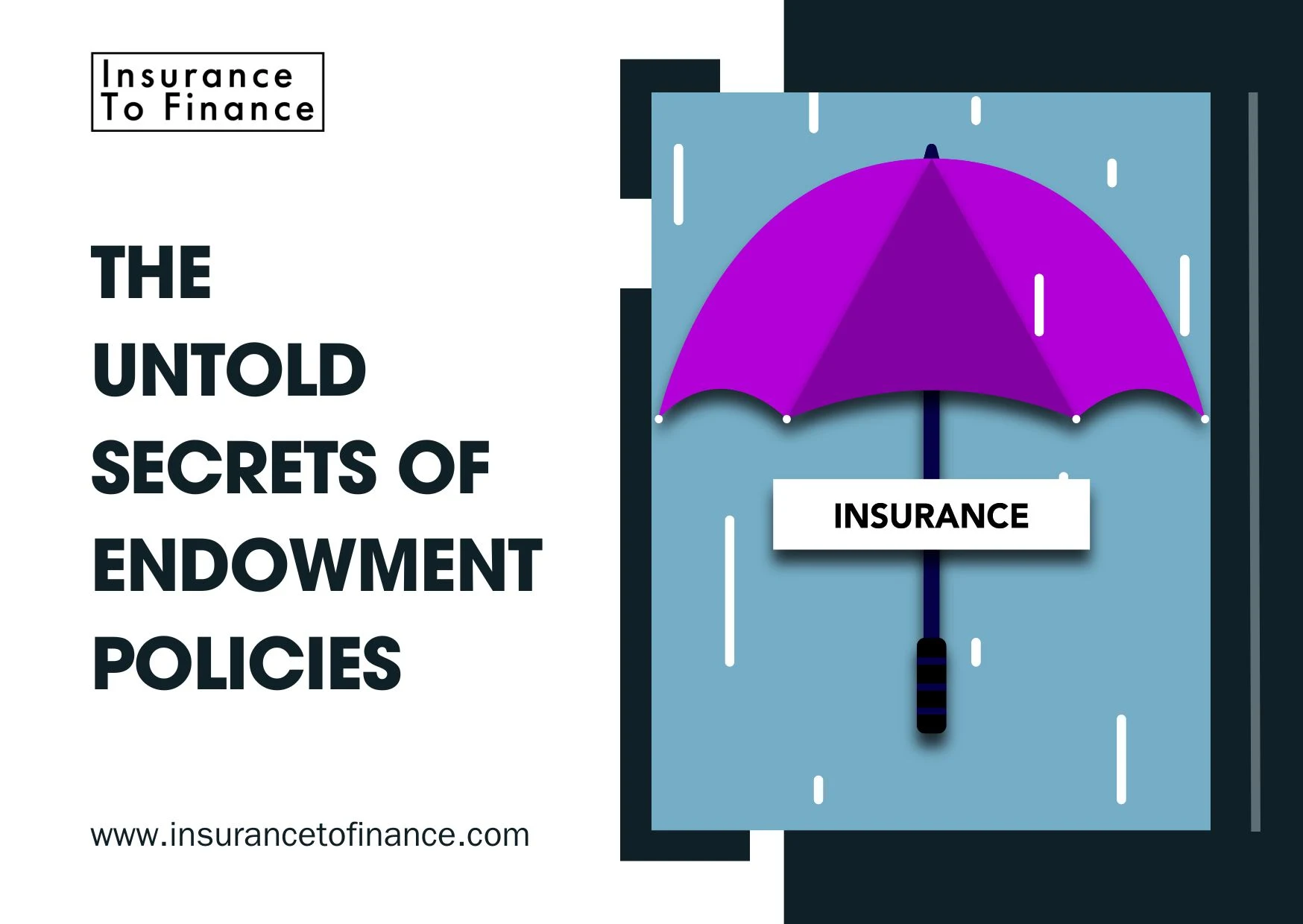In the world of insurance, endowment plans are frequently disregarded, yet they contain a wealth of hidden information that might have a big influence on your financial destiny. We explore the complexities of endowment policies in this piece, revealing undiscovered benefits, clearing up frequent misunderstandings, and offering insightful information to support your decision-making.
Endowment policies, often shrouded in mystery, hold untold secrets that can significantly impact your financial future. In this article, we delve deep into the intricacies of endowment policies, unraveling their secrets to empower you with knowledge and understanding.
Exploring the Basics of Endowment Policies
Fundamentally, endowment plans are a special kind of investment and insurance that are designed to fulfil two functions in the field of personal finance.
Definition and Purpose of Endowment Policies
A financial instrument called an endowment policy combines life insurance protection with a savings or investing component. An endowment policy's main goal is to offer a financial safety net in the event that the policyholder passes away. But endowment policies are unique in that they also serve as a long-term savings vehicle. Policyholders make regular premium contributions, and a lump sum payment (which includes both the insurance coverage and the accumulated savings) is made at the policy's maturity or the covered person's death.
How They Differ from Other Insurance Policies?
The inclusion of investment or savings components sets endowment policies apart from conventional insurance offerings. Endowment policies offer more than just protection; in contrast to traditional term life insurance, which focuses only on paying out a death benefit within a predetermined term.
Endowment plans often have a defined term, as opposed to regular whole life insurance, which generally functions as lifetime coverage with a cash value component. This short period gives the policy an extra degree of flexibility by meeting certain financial objectives. A lump sum payment is made at the conclusion of the term as part of the maturity payout, providing a special way to meet long-term financial goals.
How Do Endowment Policies Work?
Endowment plans function as both an investment and an insurance product, making them a long-term financial tool. Let's examine the inner workings of these plans and how they provide policyholders with a special combination of development and security.

1. Insurance and savings combined:
An endowment policy is fundamentally a hybrid product that combines savings with life insurance. A percentage of your premiums is used to guarantee your beneficiaries a death benefit, which protects their finances in the case of your passing.
2. Cash Value Accrual
In addition, a percentage of your premium goes towards increasing the cash value of the insurance. Depending on the kind of endowment policy, variables including interest, dividends, and possible investment gains contribute to this cash value's gradual growth.
3. Maturity Benefit:
The maturity benefit is what sets endowment policies apart. Endowment policies, in contrast to standard life insurance, pay out a lump sum payment at the conclusion of a defined period regardless of the policyholder's survival. This maturity benefit is a windfall that may be applied to a number of things, such paying retirement, a house purchase, or schooling.
4. Guaranteed Bonuses and Returns:
Endowment policies frequently offer guaranteed returns, giving your investment a solid base. To improve total returns, a lot of plans also include non-guaranteed dividends or yearly incentives. The insurance business announces these incentives in accordance with its financial results.
5. Flexibility in Premium Payments:
The flexibility in premium payments offered by endowment insurance is one of their best-kept secrets. Policyholders can customize the insurance to suit their financial needs by selecting between a single lump-sum payment and ongoing premium payments.
6. Risk Mitigation Techniques:
Insurance firms use a variety of risk mitigation techniques in the endowment policy's investment component to manage market swings. These tactics seek to guarantee a stable growth trajectory while reducing hazards.
Types of Endowment Life Insurance Policies
There are many different types of endowment life insurance plans to suit different budgetary requirements and tastes. Selecting the endowment policy that best fits your objectives requires an understanding of the many types available. Let's examine the various endowment life insurance scenarios.
1. Traditional Endowment Policies:
These plans include savings and life insurance coverage, and they are the most basic kind. Regular premium payments are made, and the insurance matures with a lump sum payout at the conclusion of the set period. These plans, which frequently offer guaranteed returns, offer a solid basis for long-term financial planning.
2. Unit-Linked Endowment Policies:
These policies give the conventional model an additional component of investment risk and reward. The policyholder assumes the investment risk while premiums are invested in funds. The chosen funds' performance determines the maturity amount, which carries a certain degree of risk but also offers the possibility of larger rewards.
3. Low-Cost Endowment Policies:
As the name implies, these policies aim to minimize fees and costs. These plans are designed to give those who want to benefit from endowment insurance but don't want to pay a lot of money an affordable option. They frequently have clear price schedules and uncomplicated structures.
4. With-Profits Endowment Policies:
These endowment plans share in the insurance company's earnings. Guaranteed and non-guaranteed bonuses are paid to policyholders, increasing total returns. The bonuses offer a possible upside to the policy's maturity value and are announced in accordance with the financial success of the firm.
5. Full Endowment Policies:
These plans are intended to provide a guaranteed lump sum payout at the conclusion of the policy's term. The beneficiaries get the death benefit if the policyholder expires during the period. These plans are a popular option for people who are risk averse since they offer a guaranteed and safe cash payout.
Benefits of Endowment Policies
Endowment insurance provide policyholders with a number of advantages, such as:
1. Tax benefits: Endowment policies have a number of tax benefits, such as tax-free policy cash value growth and tax-free beneficiary distributions. The policy bearer may receive up to 1.5 lakh in tax advantages on premium payments under section 80C tax deductions.
2. Flexibility: Policyholders of endowment plans have some flexibility in that they can borrow against the policy's cash value in an emergency or add more coverage.
3. Low risk investment: endowment plans offer around 8–10% returns at a low risk thanks to insurance and secure investments.
4. Bonus: After the policy holder declares the plan, certain endowment plans further give a bonus in addition to the maturity amount.
5. Growth in investments: Over the course of the policy, the savings component of endowment plans may offer considerable investment growth, which may assist policyholders in reaching their long-term financial objectives.
6. Loan Facility: You may borrow money against the policy by using it as collateral.
Drawbacks of Endowment Policies
Endowment policies also have some drawbacks, including:
High premiums: The cost of premiums for endowment life insurance is often greater than that of other insurance plans, such as permanent insurance with a cash value component. It's critical to evaluate if the advantages outweigh the disadvantages.
Limited Protection: Endowment plans are often not convertible or renewable; instead, they are meant to last for a set amount of time only. You will thus need to get supplementary life insurance if, for example, your policy only covers you until the age of 65 and you wish to be covered for the rest of your life. Considering your age and health, that can be costly.
Low Returns: Although interest is paid on the money invested in a life insurance endowment policy, returns are often not very high. Instead, you might be able to receive a considerably greater return on your money by investing it in the market, depending on your investment style and risk tolerance.
Limited Investment possibilities: Because the insurance company oversees the assets, endowment policies usually give fewer alternatives for investing.
Limited Liquidity: Policyholders may not be able to access the cash value of their endowment policy without paying penalties or surrender costs due to the policy's limited liquidity.
Who Should consider an Endowment Life Insurance Policy?
Certain people should not own endowment insurance. They might be appropriate for people who:
- Establish clear long-term financial objectives, such as putting money down for a down payment on a home or a child's school.
- Wish to combine long-term investments with life insurance.
- Are prepared to commit to paying premiums on time for a predetermined amount of time.
- Are trying to find a surefire, secure approach to save costs.
An endowment policy, however, might not be the ideal option if you're searching for a more cost-effective life insurance alternative or if you'd want to have greater influence over your assets. To choose the best life insurance policy for you, you must evaluate endowment policies against other kinds of policies.
Final Words on Secrets of Endowment Policies
To sum up, endowment policies' hidden mysteries provide a distinctive angle on investing and insurance. You may maximize the potential of these financial tools by being aware of the hidden benefits, clearing up myths, and embracing flexibility. Utilize endowment policies' potential to make well-informed decisions that will ensure your financial future.
FAQ for Secrets of Endowment Policies
Q1. Are endowment plans appropriate for all individuals?
Answer: Suitability varies because endowment policies address certain financial objectives. Find out from a financial expert whether it fits with your goals.
Q2. What occurs if I neglect to pay my premium?
Answer: The benefits of your insurance may be impacted by late premium payments. For detailed information on grace periods and any repercussions, speak with your insurance.
Q3. Before I reach adulthood, may I relinquish my endowment policy?
Answer: It is possible to surrender an insurance policy before it matures, although doing so might result in losses. Prior to making a choice of this nature, consider the terms and circumstances.
Q4. How often should my endowment policy be reviewed?
Answer: It is a good idea to examine your endowment policy on a regular basis, particularly after significant life events. This guarantees your coverage meets your needs as they are right now.






0 Comments